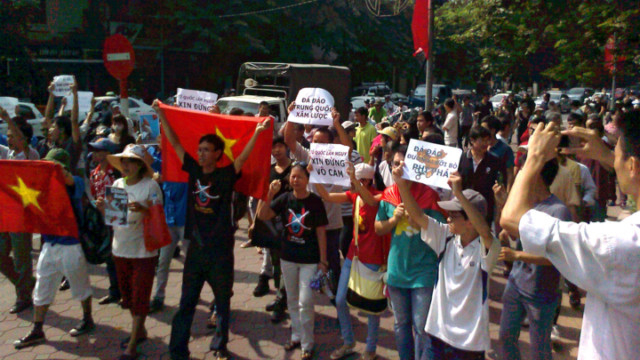
Beijing: China’s Foreign Ministry has called in a senior US diplomat to protest against remarks by the US State Department raising concerns over tensions in the contested South China Sea, further intensifying an already fraught territorial dispute.
In a statement released late on Saturday, China’s Foreign Ministry said Assistant Foreign Minister Zhang Kunsheng summoned the US Embassy’s Deputy Chief of Mission Robert Wang to make “serious representations” about the issue.
The State Department on Friday said it was monitoring the situation in the seas closely, adding that China’s establishment of a military garrison for the area runs “counter to collaborative diplomatic efforts to resolve differences and risk further escalating tensions in the region”.
The South China Sea has become Asia’s biggest potential military flashpoint. Beijing’s sovereignty claim over the huge area has set it against Vietnam and the Philippines as the three countries race to tap possibly huge oil reserves.
Beijing and Washington are already at odds over numerous matters, including the value of China’s currency, Tibet and Taiwan.
Zhang said the US statement “disregarded the facts, confused right with wrong, sent a seriously wrong signal and did not help with efforts by relevant parties to maintain peace and stability in the South China Sea or the Asia Pacific”.
“China expresses its strong dissatisfaction and resolute opposition, urges the US side to immediately to mend the error of its ways, earnestly respect China’s sovereignty and territorial integrity and do more to genuinely benefit stability and prosperity in the Asia Pacific,” he added.
A separate statement by ministry spokesman Qin Gang repeated that China had absolute sovereignty over the sea and its myriad islands and had every right to formally set up a city to administer the region, which it did last month.
“Why does the US turn a blind eye to the facts that certain countries opened a number of oil and gas blocks, and issued domestic laws illegally appropriating Chinese islands and waters?” Qin said.
“Why does the US avoid talking about the threats of military vessels to Chinese fishermen by certain countries and their unjustified claims of sovereignty rights over Chinese islands?” he added.
The official Xinhua news agency said the United States was trying to present itself as an honest broker in the dispute, but that its real intent was to stir up trouble and drive a wedge between China and its neighbours for its own gain.
Washington should “thoroughly abandon it plot to seek advantage from the chaos so the South China Sea can resume its role as a sea of peace, friendship and cooperation”, Xinhua said in an angry commentary.
In all, six parties have rival claims to the waters, which were a central issue at an acrimonious Asean (Association of South East Nations) regional summit last month that ended with its members failing to agree on a concluding statement for the first time in 45 years.
In the Vietnamese capital Hanoi, police on Sunday arrested at least 40 people preparing to stage another anti-China protest, said blogger Phuong Bich.
Authorities in Vietnam rarely allow demonstrations, but there have been periodic protests against China in Hanoi over the past few months as a result of what many Vietnamese see as Beijing’s aggressive moves in the South China Sea.
The stakes have risen in the area as the U.S. military shifts its attention and resources back to Asia, emboldening its long-time ally the Philippines and former foe Vietnam to take a tougher stance against Beijing.
The United States has stressed it is neutral in the long-running maritime dispute, despite offering to help boost the Philippines’ decrepit military forces. It says freedom of navigation is its main concern about a waterway that carries $5 trillion (Dh18.36 trillion) in trade annually — half the world’s shipping tonnage.












